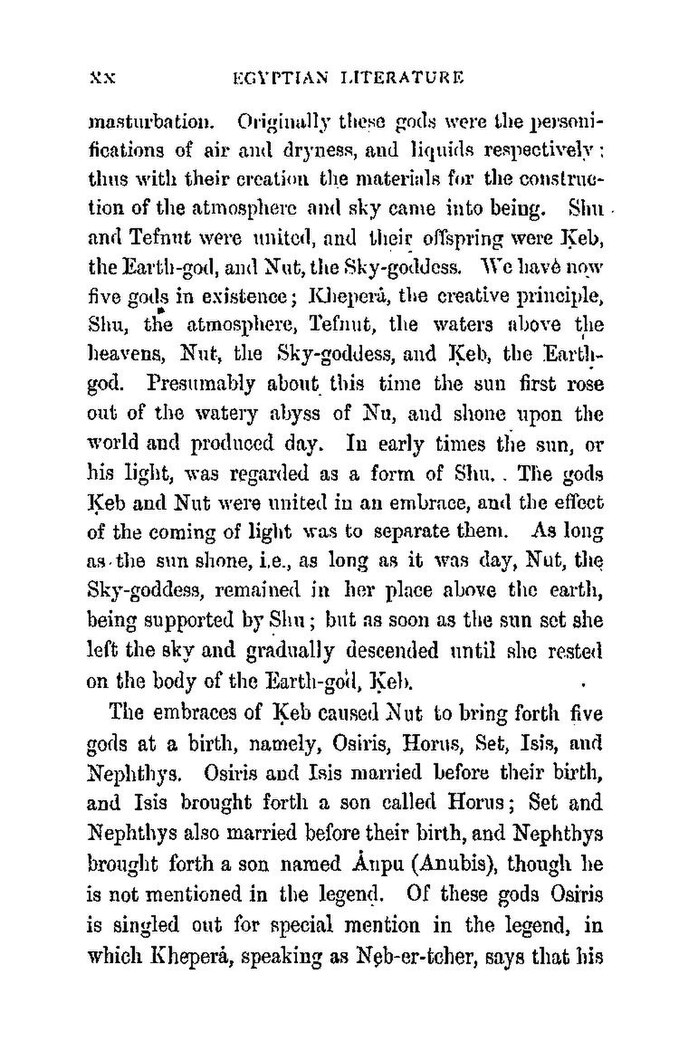masturbation. Originally these gods were the personifications of air and dryness, and liquids respectively; thus with their creation the materials for the construction of the atmosphere and sky came into being. Shu and Tefnut were united, and their offspring were Ḳeb, the Earth-god, and Nut, the Sky-goddess. We have now five gods in existence; Kheperȧ, the creative principle, Shu, the atmosphere, Tefnut, the waters above the heavens, Nut, the Sky-goddess, and Ḳeb, the Earth-god. Presumably about this time the sun first rose out of the watery abyss of Nu, and shone upon the world and produced day. In early times the sun, or his light, was regarded as a form of Shu. The gods Ḳeb and Nut were united in an embrace, and the effect of the coming of light was to separate them. As long as the sun shone, i.e., as long as it was day, Nut, the Sky-goddess, remained in her place above the earth, being supported by Shu; but as soon as the sun set she left the sky and gradually descended until she rested on the body of the Earth-god, Ḳeb.
The embraces of Ḳeb caused Nut to bring forth five gods at a birth, namely, Osiris, Horus, Set, Isis, and Nephthys. Osiris and Isis married before their birth, and Isis brought forth a son called Horus; Set and Nephthys also married before their birth, and Nephthys brought forth a son named Ȧupu (Anubis), though he is not mentioned in the legend. Of these gods Osiris is singled out for special mention in the legend, in which Kheperȧ, speaking as Neb-er-tcher, says that his
